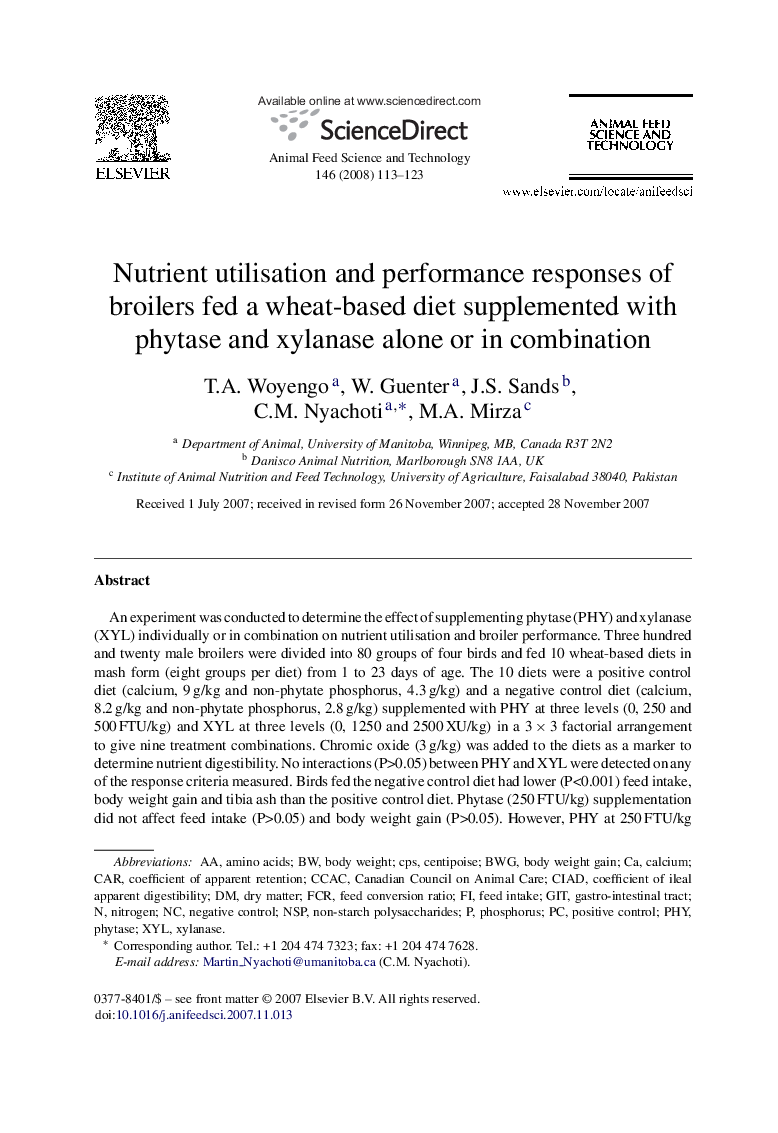| Article ID | Journal | Published Year | Pages | File Type |
|---|---|---|---|---|
| 2420763 | Animal Feed Science and Technology | 2008 | 11 Pages |
An experiment was conducted to determine the effect of supplementing phytase (PHY) and xylanase (XYL) individually or in combination on nutrient utilisation and broiler performance. Three hundred and twenty male broilers were divided into 80 groups of four birds and fed 10 wheat-based diets in mash form (eight groups per diet) from 1 to 23 days of age. The 10 diets were a positive control diet (calcium, 9 g/kg and non-phytate phosphorus, 4.3 g/kg) and a negative control diet (calcium, 8.2 g/kg and non-phytate phosphorus, 2.8 g/kg) supplemented with PHY at three levels (0, 250 and 500 FTU/kg) and XYL at three levels (0, 1250 and 2500 XU/kg) in a 3 × 3 factorial arrangement to give nine treatment combinations. Chromic oxide (3 g/kg) was added to the diets as a marker to determine nutrient digestibility. No interactions (P>0.05) between PHY and XYL were detected on any of the response criteria measured. Birds fed the negative control diet had lower (P<0.001) feed intake, body weight gain and tibia ash than the positive control diet. Phytase (250 FTU/kg) supplementation did not affect feed intake (P>0.05) and body weight gain (P>0.05). However, PHY at 250 FTU/kg compared to PHY at 0 FTU/kg, improved (P<0.05) feed conversion ratio, tibia ash, coefficient of ileal apparent digestibility of phosphorus, and coefficient of apparent retention of phosphorus and calcium by 2.0, 3.5, 17.7, 8.7 and 8.4%, respectively, but with no further response (P>0.05) at a higher level of PHY (500 FTU/kg) supplementation. Also, mineralisation of tibias from birds fed diets with PHY at 500 FTU/kg did not improve (P>0.05) tibia ash to that of the positive control diet. Xylanase supplementation did not affect (P>0.05) performance and mineral utilisation responses except for coefficient of apparent retention of calcium, which was increased (P<0.001). In conclusion, PHY improved phosphorus and calcium utilisation, but showed no synergistic effect with XYL on any of the response criteria measured.
